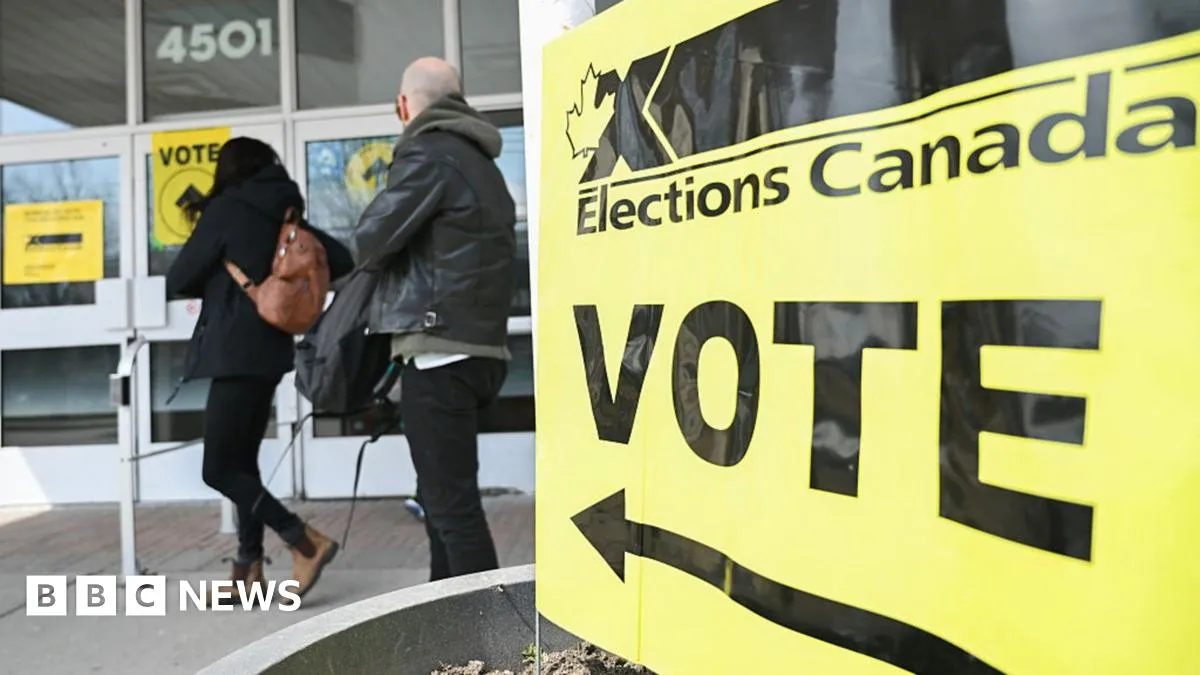
As the political landscape in Canada heats up, Newfoundland and Labrador stands out as a crucial region in the election process. The first polling stations to open across Canada were located in Newfoundland and parts of Labrador, with seven ridings that each correspond to a seat in the House of Commons. These ridings include: Avalon, Cape Spear, Central Newfoundland, Labrador, Long Range Mountains, St John's East, and Terra Nova - The Peninsulas. As of January 2025, the provincial government recorded a population of 545,579, a significant number of whom are of voting age. Stay tuned as we cover the unfolding electoral events across the nation.
In a surprising turn of events, climate change has slipped down the priority list during this election cycle. Matt McGrath, our environment correspondent, reports that the focus has largely shifted towards the implications of U.S. President Donald Trump's policies on Canada’s federal election agenda. The two leading contenders are unveiling plans for new energy infrastructures, showcasing a desire to reduce reliance on the United States. The Liberals, under Mark Carney, are promising to position Canada as a global superpower in both conventional and green energy, while the Conservatives, led by Pierre Poilievre, are advocating for revitalizing the oil and gas sector and scrapping the industrial carbon tax.
This marks a significant departure from the previous election in 2021, where environmental issues dominated voter concerns. Carney, who assumed the role of prime minister in early March, has a storied history as an advocate for climate action, yet his first act in office was to repeal the consumer carbon levy. Meanwhile, Poilievre's campaign focuses on cost-of-living issues, law and order policies, and what he terms "woke cultural issues." As a result, discussions surrounding fossil fuels are becoming prominent, while climate change is increasingly sidelined.
In Quebec, the sentiment towards independence from Canada has been reignited amidst the growing tensions with the United States. Jessica Murphy reports from Montreal that the Bloc Québécois, a federal party advocating for independence, is witnessing a surge in Canadian patriotism among voters. This shift is largely a reaction to U.S. tariffs and President Trump's remarks about Canada potentially becoming the 51st state. Émilie Foster, a politics professor at Carleton University, notes that many Quebec voters now prefer unity with Canada over any affiliation with the United States.
The province is an electoral battleground, holding 78 of the 343 seats in the House of Commons. Trump's tariffs are particularly impactful in Quebec, which is a major supplier of aluminum and is heavily involved in forestry and dairy industries. The potential threat to Quebec's distinct cultural identity and its history of seeking independence through referendums adds another layer of complexity to this election cycle.
In a shocking incident just days before the election, an attack in Vancouver claimed the lives of eleven people when a car drove through a festival celebrating Lapu Lapu Day. The suspect, identified as 30-year-old Kai-Ji Adam Lo, is facing multiple murder charges. The victims, aged between five and 65, were part of a gathering that celebrated the Filipino national hero who resisted Spanish colonization in the 1500s. This tragedy has overshadowed the election, as the nation mourns and looks for answers.
Canada's election system shares similarities with the UK's Westminster Parliamentary system. Here’s how it works: Voters cast their ballots at polling stations in their local communities, with options for early voting. Each ballot lists candidates representing various federal parties within specific ridings. The candidate with the most votes secures a seat in parliament, representing their geographical area in Ottawa.
The party that wins the majority of seats traditionally forms the government, with its leader becoming the prime minister. A majority win requires at least 172 seats, facilitating smoother governance and legislative passage. In contrast, a minority government, where a party wins the most seats but less than 172, must collaborate with other parties to pass legislation, leading to potential instability.
As election day approaches, the focus narrows to the two dominant parties: the Liberal Party and the Conservative Party. The Liberals have maintained power since Justin Trudeau's election in 2015, while the Conservatives have held the official opposition role. Historically, Canadian governance has oscillated between these two parties, although other parties like the New Democratic Party (NDP), the Bloc Québécois, and the Green Party also play significant roles.
Recent polls indicate a neck-and-neck race between the Liberals and Conservatives, with the Liberals gaining a slight edge. This election is not just a referendum on nearly a decade of Liberal governance; it's also a pivotal moment that could redefine Canada's relationship with the United States, particularly in light of President Trump's policies and the ongoing economic challenges faced by Canadian industries.
As Canadians head to the polls, the atmosphere is charged with anticipation and anxiety. Jenna Moon, our live page editor, reflects on the unique nature of this election, noting the shifting sentiments towards U.S. relations and the impact of recent events, such as the tragic car ramming in Vancouver. With the race so close, how Canadians vote today will significantly shape the future direction of the country and its relationship with its closest neighbor.